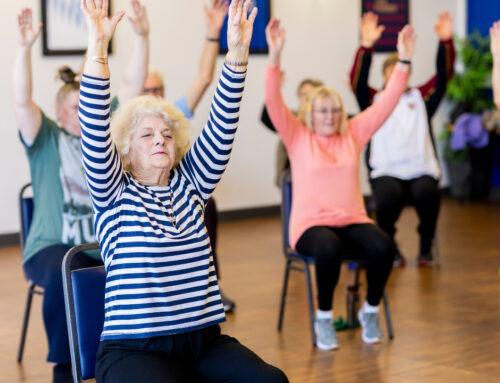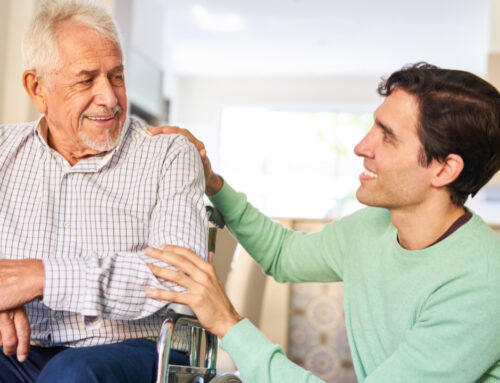Senior living communities offer all kinds of psychological and social benefits to residents, from access to new friends, activities, and hobbies to the peace of mind that comes with knowing someone will always be there if things go wrong. What not everyone realizes is that assisted living homes often offer physical benefits, as well. One of the most important of those benefits is access to physical and occupational therapy services when they are needed.
What Are Physical and Occupational Therapy?
Physical therapy focuses on helping people recover from major injuries, illnesses, and surgeries. It generally focuses on large muscle movements, increasing muscle tone and endurance, and range of motion. The exact types of services offered vary based on what has brought a senior in for physical therapy, but they typically include therapeutic massages, targeted exercises, and stretches to help the musculoskeletal system recover faster.
Occupational therapy is a little different. It focuses more on the fine motor movements required to successfully and safely perform the activities of daily living. It’s common for seniors to attend occupational therapy after surgeries, strokes, and other issues that affect mobility or body awareness. Occupational therapists are also excellent at helping seniors find adaptive equipment that can increase their independence.
The Benefits of Physical and Occupational Therapy
Some people are more enthusiastic about attending physical and occupational therapy than others, and having to travel off-site can create one more challenge for seniors already struggling with mobility issues. Providing physical therapy and occupational therapy on-site at a senior living community makes these services much more accessible and allows more residents to take advantage of their many benefits. Those benefits can include:
Speed Recovery
When seniors are in the hospital after major injuries or illnesses or while they recover from surgeries, they usually spend next to no time up and out of bed, especially when fall risk could be an issue. This leads to deconditioning, which makes it even harder to recover from the initial problem. Attending physical and occupational therapy sessions will help residents get up and get moving again so that they can recover faster.
Stay Mobile and Engaged
Struggling with mobility can leave residents who have just returned from the hospital feeling like they can’t get back to their normal lives. Physical and occupational therapy can help them regain enough mobility to move around freely and securely, which allows them to re-engage with the community and return to participating in the activities they love. The ability to stay active and engaged following a hospital visit may be especially important for those living in memory care communities.
Restore Independence
Attending physical and occupational therapy sessions following an injury or illness can help seniors regain a sense of independence and autonomy. By increasing both strength and mobility, they can return to performing tasks independently that would have required help before. This makes people feel more in control of their lives and lessens the potential burdens of isolation and loneliness.
Reduce the Risk of Health Complications
Returning to an active state following hospitalization can help seniors reduce the risk of developing health complications during their recuperation periods. Regular physical and occupational therapy exercises get people up and moving, which helps them avoid pressure sores, joint discomfort, and even pneumonia. Plus, because physical and occupational therapy also helps seniors return to a more independent state, they are also associated with improvements in overall health and wellness.
When Is Therapy Appropriate?
Physical and occupational therapy usually require referrals, even when it takes place on-site at senior living communities. Doctors typically prescribe physical and occupational therapy for seniors whenever they are discharged from hospitals, not just to speed up recovery but also to reduce the long-term impact of hospital-acquired deconditioning. Aside from general help with regaining muscle and joint function, physical therapy may be prescribed for:
- Osteoporosis
- Osteoarthritis
- Neurological conditions
- Cancer pain
- Incontinence
- And more
Occupational therapy is a little different. Because it focuses on helping people return to their normal activities, it’s appropriate for almost any condition, including strokes and cognitive decline. Occupational therapy is always helpful to seniors returning home from the hospital but it can be especially beneficial for those who have experienced temporary or permanent changes in mobility that will require the use of adaptive devices.
Find the Right Senior Living Home
Not all assisted living communities offer advanced amenities like in-house physical and occupational therapy. Seniors and their loved ones should ask about this service as they investigate senior living options. Check out Vista at Simi Valley online or schedule a tour to learn about one vibrant community that helps all of its residents remain active and live up to their full potential. Call (805) 351-8802 to schedule a tour.





